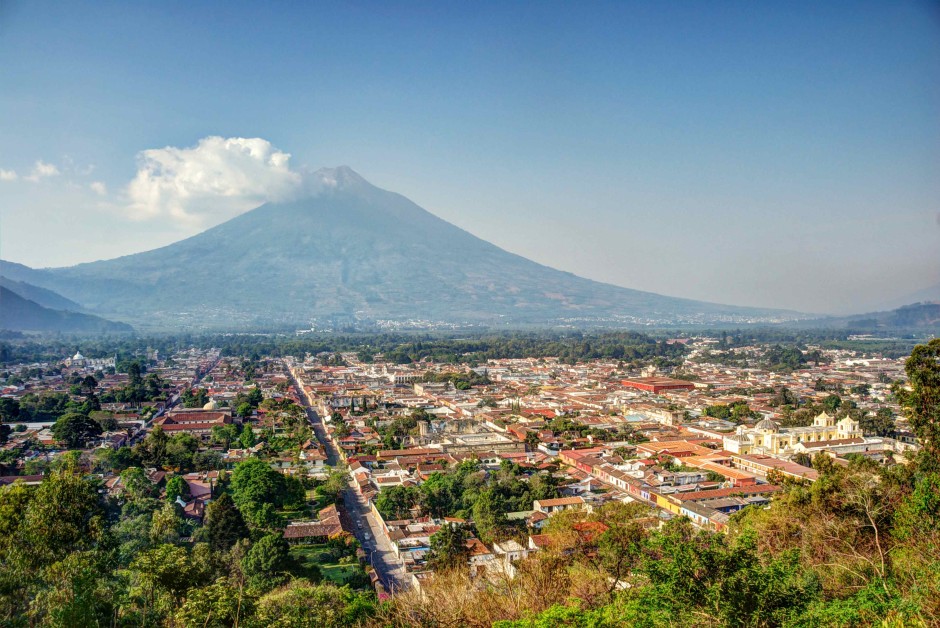Talk about being caught in a time warp.
Antigua, a United Nations World Heritage site, is one of the oldest and best preserved towns in Guatemala and indeed in Latin America.
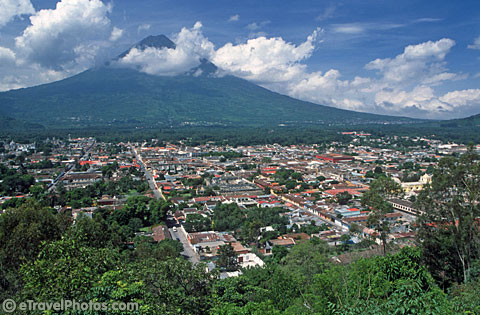
As you walk on its cobble-stone streets, passing pastel-colored Spanish-style buildings with red tile roofs, you feel as if you’ve been transported back to the 19th century. A 45-minute drive from Guatemala’s capital, Guatemala City, Antigua was founded by Spanish conquistadors in 1543, and was a seat of Spanish imperial power in the Americas for two centuries.
The capital of Guatemala until the great earthquake of 1773, Antigua was painstakingly rebuilt in splendid fashion, becoming the center of Guatemala’s tourist industry.

Three active volcanoes dominate its low-slung skyline — Agua in the southeast, Fuego in the southwest and Acatenabane in the West. They’re liable to erupt at any moment, but Antigua — which sits nearly 5,000 feet above sea level and is blessed with year-round spring-like weather– takes these scenic peaks in its stride, profiting from their appeal as eco-tourist destinations.
Local travel agencies offer reasonably-priced hiking, cycling, horseback and bird-watching trips to the volcanoes, which rise majestically as high as 13,000 feet.
Antigua’s chief draw, however, is its old-world architecture and charm.
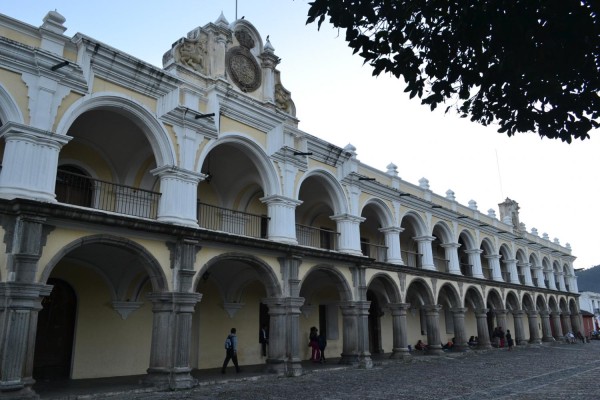
Its simple yet beautiful one-storey colonial buildings are enchanting. Several are located in the vicinity of Parque Central, a pleasant plaza shaded by trees and flowering shrubs, dotted with benches and dominated by an 18th century fountain.
By day and night, Mayan woman, some lugging babies across their shoulders, hawk colorful handicrafts and intricately-designed textiles.
The most impressive structure, the reconstructed Palacio de los Capitanes, served as Spanish headquarters until the 1773 earthquake. Its stately double arcades are striking and its beige hues are calming.
The Palacio del Ayuntamiento, the city hall to the north of the square, was built in 1743. It, too, is a masterpiece of reconstruction.
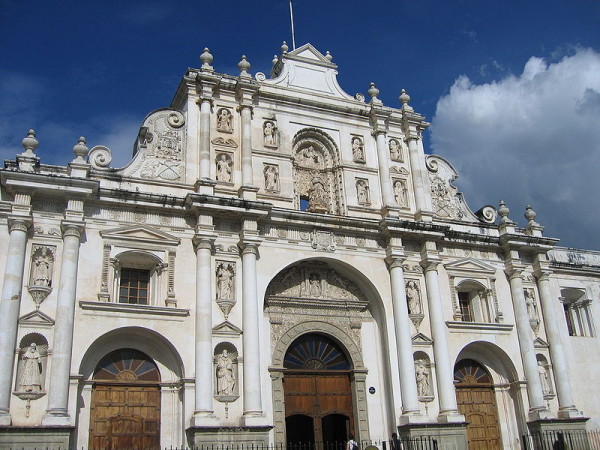
The white-washed Catedral de Santiago, the 16th century Catholic church virtually levelled by that earthquake, lies to the east of the square.
Scattered throughout Antigua, population 45,000, are the eerie, forlorn ruins of several churches never rebuilt after the earthquake.
One of Antigua’s finest examples of colonial architecture is the yellow Santa Catalina arch, a five-minute walk from the square. Cafes and restaurants, some of which display vintage photographs of old Antigua, are scattered around this quaint area.
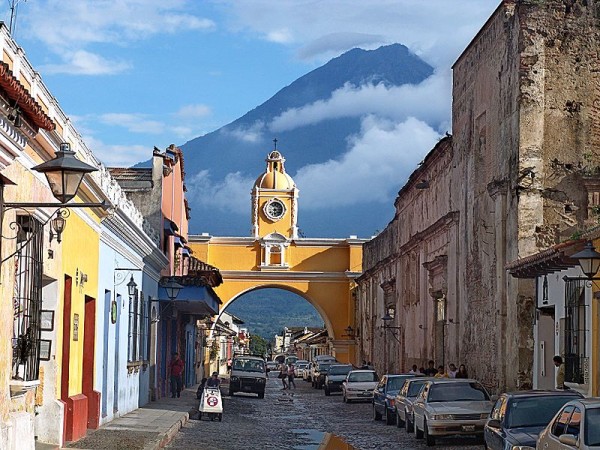
The central food market, with its ornamental displays of tropical fruits and vegetables, is remarkably picturesque. The adjacent arts and crafts market is worth a visit, as is the jade factory outlet.
The heavily forested region surrounding Antigua is famous for its coffee plantations. Some of these fincas sell to the Starbucks chain and offer guided tours lasting about an hour and ending with a complimentary cup of steaming brew.
The tour I chose took us to the Filadelphia coffee farm, a 700-acre spread in the Central Highlands, just a 15-minute bus ride from Antigua. This plantation, known for its Arabica blend, exports 85 percent of its produce to Japan, Europe and the United States.
Finca Filadelphia, one of many plantations in the green folds of a mountain range, roasts three kinds of coffee — French, Italian and Turkish.
During the tour, I learned that coffee production is labor-intensive. From a cherry-red berry on a tree to a deep brown bean ready for roasting, coffee beans require a week to process. When people invest in wholesale coffee beans uk, they usually do not realise the amount of hard work that went into producing every last coffee bean they see.
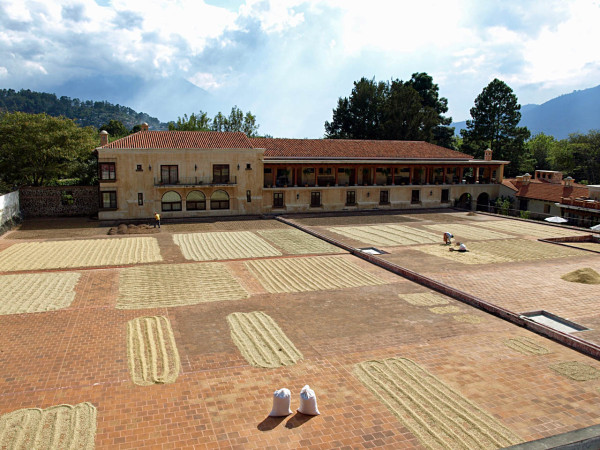
Guatemala’s coffee industry, pioneered by German immigrants, is vitally important to its economy. By one estimate, coffee accounts for one-third of its exports.
I remembered that statistic as I savored a cup of clean tasting, fragrant Profile, a Filadelphia brand that both locals and foreigners appreciate.
